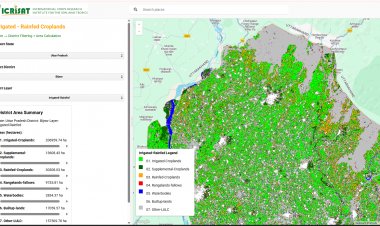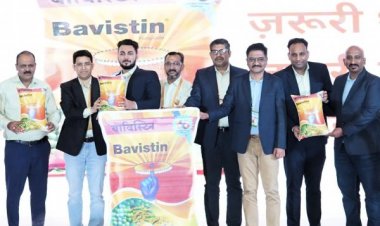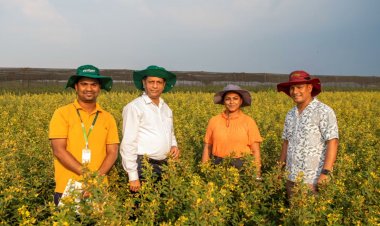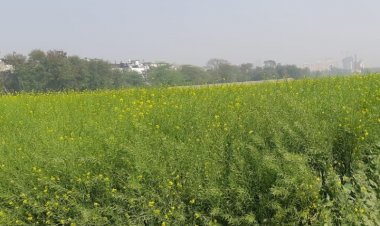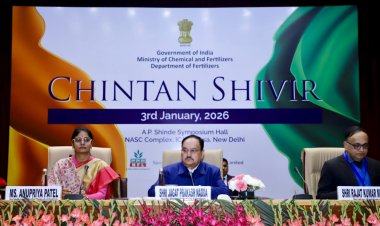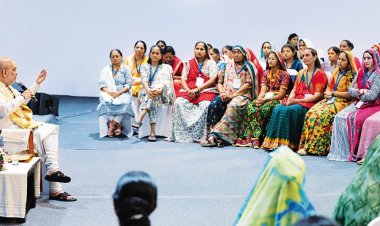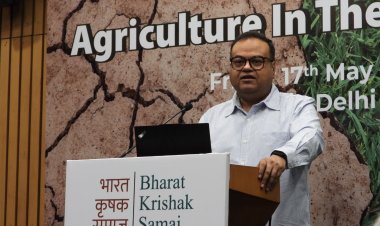Rural Voice Special: Ornamental fish farming and how much you can earn from it
The success of the ornamental fish farming business requires adopting an appropriate management protocol for fish breeding and rearing. The site and the layout of fish farming are also important. Adequate fresh water, quality broodstock and an uninterrupted supply of electricity are the basic requirements.
People are fond of keeping ornamental fishes in their aquariums these days. It has been identified as the second most popular hobby in the world. And the number of those fond of ornamental fish is increasing by the day. This has led to new employment opportunities in ornamental fish farming on a large scale in urban and rural areas both. Dr Saroj Kumar Swain, Director, Central Institute of Freshwater Aquaculture (CIFA), Bhubaneswar, spoke about ornamental fisheries technology in detail in the Rural Voice Agritech Show. You may watch this episode of the show by clicking on the above video link.
Dr Swain said that many people were associated with ornamental fish farming and made decent money out of it. But the success of the ornamental fish farming business requires adopting an appropriate management protocol for fish breeding and rearing. The site and the layout of fish farming are also important. Adequate fresh water, quality broodstock and an uninterrupted supply of electricity are the basic requirements. If ornamental fish farming is to be done on a small scale, at least 500 square metres of space is required. Cement and concrete tanks have to be made. Large-scale fish farming requires more than a hectare of land.
The CIFA Director said that the rivers and water bodies of our country had some ornamental fishes that were brought to his Institute for breeding. According to him, there are 15-18 species of ornamental fish in India. Besides, ornamental fishes from abroad are also bred and fish seeds are made available to the farmers.
Dr Swain said that coloured (ornamental) fishes are softer than ordinary ones. So, they are reared in cement tanks. The water quality should be good and the temperature low. Dr Swain said that depending on the species of the fish, mud ponds are required besides cement tanks. Nets are also required to protect the fish in the pond from the birds.
Some of the species prefer alkaline water while others acidic. So, it is very important for those who run aquarium businesses or those who keep aquariums as a hobby to know about the species of the fish. It is also important to feed the fish regularly. Their food should contain 35 per cent of protein. This leads to their quick and healthy growth. They are ready for sale after three months.
Dr Swain said that farmers can start ornamental fish production on a scale varying from small to large as per their own capacity. If a farmer wants to set up a small unit, he will have to spend Rs 50,000-Rs 70,000 on shade, fish feed and other necessary items. He can earn Rs 3,000-Rs 5,000 from this. An investment of about Rs 1.25 lakh can lead to a monthly income of Rs 8,000-Rs 9,000. If one rears ornamental fish on a large scale with an investment of, say, Rs 25 lakh, one’s monthly income can be in the range of Rs 1.25 lakh to Rs 1.5 lakh.
According to Dr Swain, the government is giving subsidies to encourage coloured fish farming. There is a facility of 60 per cent subsidy for women and 40 per cent for men under the Pradhan Mantri Matsya Sampada Yojana (PMMSY).
Rajesh Ranjan Mahapatra, an ornamental fish farmer from the Kochia Noiga village of Cuttack district in Odisha, said in the Rural Voice Agritech Show that he trained at CIFA, Bhubaneswar. He now produces ornamental fishes on five acres. He said it cost him Rs 47 lakh to develop this farm and he now earned Rs 5-7 lakh every year. He said that ornamental fishes sold at up to 10 times higher prices than ordinary ones. Farmers can earn a good profit by adopting this business.



 Join the RuralVoice whatsapp group
Join the RuralVoice whatsapp group

















